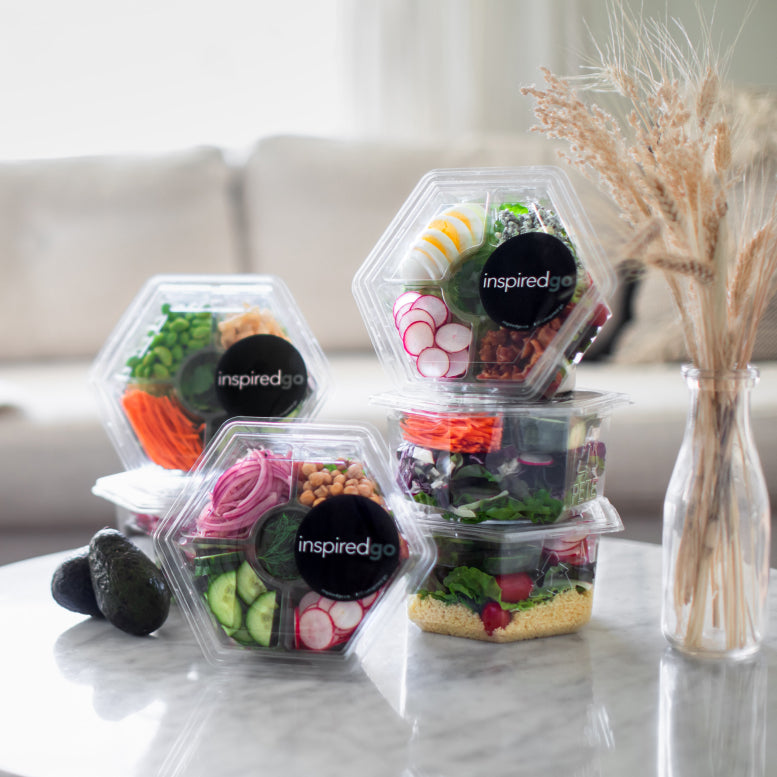Which Meal Delivery Services Are Best For Low Calorie Diets?
Table of Contents
1. Embracing Nutritious Meal Delivery Services for Low-Calorie Diets
2. How Many Calories Should a Meal Have on a Low-Calorie Plan?
3. How Are Low-Calorie Meals Prepared for Delivery?
4. How Can Inspired Go Support Your Health Goals?
1. Embracing Nutritious Meal Delivery Services for Low-Calorie Diets
For individuals pursuing a low-calorie diet, finding the right meal delivery service can be a game-changer. The ideal service should offer meals that are not only low in calories but also high in nutrients to maintain overall health. These services save time on meal prep and make it easy to stay on track with a diet plan. By delivering fresh, ready-to-eat meals right to your doorstep, they eliminate the hassle of grocery shopping, cooking, and portion control. Many of these services also offer customizable meal plans, catering to dietary restrictions and personal taste preferences. Furthermore, they contribute to reducing food waste, as meals are perfectly portioned to meet the dietary needs of individuals. Notably, some meal delivery services are making strides in promoting sustainability by using 100% recyclable packaging. They offer a variety of meal options, including salads, breakfast items, snack packs, and dinner options, all designed to promote balanced nutrition while adhering to a low-calorie diet.
Order fresh salads today →


2. How Many Calories Should a Meal Have on a Low-Calorie Plan?
The ideal calorie count for a low-calorie meal depends on individual needs such as activity level, age, gender, and weight management goals. Generally, low-calorie meal plans provide meals ranging between 300 to 500 calories, with salads often being the most effective option due to their nutrient density and natural portion control. These salads combine crisp greens, lean proteins like grilled chicken or chickpeas, and light dressings that deliver flavor without unnecessary calories. Properly designed meals focus on nutrient density rather than strict calorie cutting, ensuring your body gets the fuel it needs to function well. Meal delivery services simplify this by offering pre-calculated salad portions with clear nutritional labeling, removing the need for manual tracking or guesswork. This structure prevents under-eating or nutrient deficiencies that can result from poorly managed calorie restriction.
Choose your salads and schedule delivery →
3. How Are Low-Calorie Meals Prepared for Delivery?
Low-calorie meals are crafted with careful ingredient selection and portion control to ensure they meet specific dietary goals without sacrificing flavor. Many low-calorie options center around fresh salads, packed with crisp greens, vegetables, lean proteins, and whole grains to provide satisfying texture and nutrition. Chefs and dietitians collaborate to design dishes using natural flavors while minimizing added sugars and unhealthy fats. Salads are pre-portioned in controlled kitchen environments to maintain accuracy and consistency in nutrition. They are then sealed in temperature-controlled packaging to retain freshness during delivery and refrigeration. Nutritional information is provided with each meal, giving customers transparency about calorie counts and macronutrient breakdowns. This thoughtful preparation ensures you receive convenient, flavorful salads that align with low-calorie targets.
Get fresh salads and snacks delivered →
4. How Can Inspired Go Support Your Health Goals?
Achieving health and weight goals becomes easier when your meals are convenient and nutritious. Inspired Go specializes in fresh, low-calorie salads that provide balanced nutrition without the effort of planning or prepping. Our salads feature nutrient-rich greens, lean proteins, and flavorful toppings that deliver long-lasting energy in fewer calories. With pre-portioned servings and clear nutritional transparency, you can stay on track without second-guessing your choices. Our rotating menu offers variety to keep your diet exciting while maintaining calorie goals. Delivered fresh and ready-to-eat, Inspired Go takes the hassle out of healthy eating, making it simple to maintain long-term wellness and enjoy every bite. It’s healthy eating that fits effortlessly into your routine—no cooking, no planning, just fresh, chef-crafted meals that help you stay consistent and feel your best.
Try our fresh, ready-to-eat salads →
Frequently Asked Questions
The keto diet can be healthy for some individuals, but its effectiveness and safety depend on personal health goals and conditions. It emphasizes low-carb, high-fat foods to encourage the body to burn fat for energy. While it may promote weight loss and improve blood sugar control, it can also lead to nutrient deficiencies if not balanced properly. Consulting a healthcare professional before starting the keto diet is highly recommended.
Starting a healthy diet involves gradually introducing nutrient-rich foods while reducing processed and sugary options. Focus on whole foods like fruits, vegetables, lean proteins, whole grains, and healthy fats. Meal planning can simplify your efforts and help create balanced portions. Additionally, stay hydrated and avoid extreme restrictions. Beginning with small, sustainable changes allows you to build habits that support long-term health.
A low-carb diet can be healthy when balanced with nutrient-dense foods. Reducing carbohydrates and focusing on proteins, healthy fats, and vegetables can improve blood sugar control and promote weight loss. However, cutting carbs too drastically can lead to fatigue, nutrient deficiencies, or digestive issues. For a sustainable low-carb diet, incorporate a variety of nutrient-rich foods and avoid overly restrictive practices.
A healthy diet is balanced and includes a variety of nutrient-dense foods from all major food groups. It prioritizes fruits, vegetables, whole grains, lean proteins, and healthy fats, while limiting processed foods, added sugars, and excessive sodium. Portion control and proper hydration are key components. A healthy diet not only supports physical health but also boosts energy levels, mental clarity, and overall well-being.
The Mediterranean diet is often regarded as one of the healthiest. It focuses on plant-based foods, such as fruits, vegetables, whole grains, nuts, and seeds, alongside healthy fats like olive oil. Moderate amounts of fish, poultry, and dairy are included, while red meat is limited. Known for reducing the risk of heart disease and improving longevity, it offers a well-rounded approach to healthy eating.

